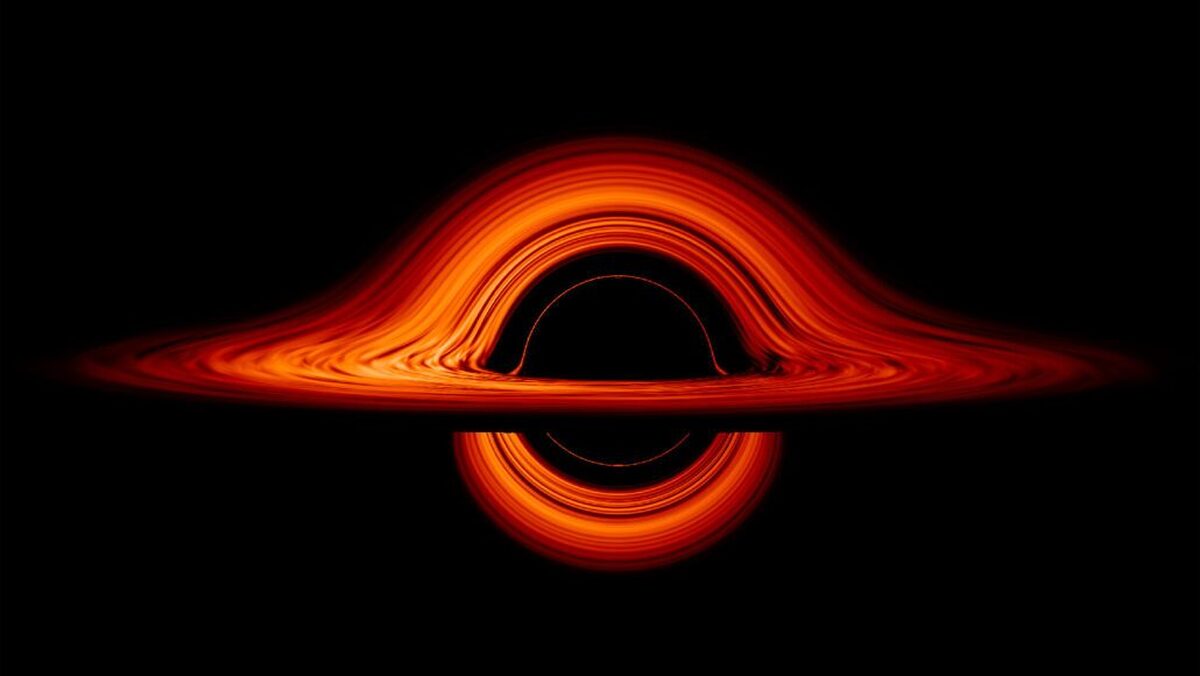Black Holes Resolve Paradoxes by Destroying Quantum States

Don’t try to do a quantum experiment near a black hole — its mere presence ruins all quantum states in its vicinity, researchers said at a meeting of the American Physical Society.
The finding comes from a thought experiment that pits the rules of quantum mechanics and black holes against each other, physicists said. Any quantum experiment done near a black hole could set up a paradox, the researchers find, in which the black hole reveals information about its interior — something physics says is forbidden. The way around the paradox, the team reports, is if the black hole simply destroys any quantum states that come close.
That destruction could have implications for future theories of quantum gravity. These sought-after theories aim to unite quantum mechanics, the set of rules governing subatomic particles, and general relativity, which describes how mass moves on cosmic scales.
“The idea is to use properties of the [theories] that you understand, which [are] quantum mechanics and gravity, to probe aspects of the fundamental theory,” which is quantum gravity, says theoretical physicist Gautam Satishchandran of Princeton University.
Here’s how Satishchandran, along with theoretical physicists Daine Danielson and Robert Wald, both of the University of Chicago, did just that.
First the team imagined a person, call her Alice, performing the famous double-slit experiment in a lab orbiting a black hole (SN: 11/5/10). In this classic example of quantum physics, a scientist sends a particle, like an electron or a photon, toward a pair of slits in a solid barrier. If no one observes the particle’s progress, an interference pattern typical of waves appears on a screen on the other side of the barrier, as if the particle went through both slits at once (SN: 5/3/19). But if someone, or some device, measures the particle’s path, it will register as having gone through one slit or the other. The particle’s quantum state of apparently being in two places at once collapses.
Then the team imagined another person, Bob, sitting just inside a black hole’s event horizon — the boundary beyond which not even light can escape the black hole’s gravity. Even though Bob is doomed, he can still make measurements (SN: 5/16/14). The laws of physics behave the same just inside the horizon as outside. “At the horizon, you wouldn’t even know you fell in,” Satishchandran says.
When Bob observes which slit Alice’s particle went through, the particle’s quantum state will collapse. That would also let Alice know Bob is there, messing up her experiment. But that’s a paradox — nothing done inside a black hole should affect the outside. By the laws of physics, Bob should not be able to communicate with Alice at all.
“The paradox is that black holes are a one-way street,” Satishchandran says. “Nothing done in the interior of a black hole can affect my experiment that I do in the exterior. But we just made up a scenario in which, definitely, the experiment will be affected.”
The team then guessed at a possible solution to that paradox: The black hole itself forces the quantum state of Alice’s particle to collapse, whether Bob is there or not. “It must be that there’s an effect that no one has calculated in these theories that comes to the rescue,” Danielson says.
The rescue came from the fact that charged particles radiate, or emit light, when shaken. No matter how carefully Alice sets up her experiment, her particle will always emit a tiny amount of radiation as she moves it, the physicists showed. That radiation will have a different electromagnetic field depending on which way Alice’s particle went.
When the radiation crosses the black hole’s event horizon, the black hole will register that difference, effectively observing enough about the original particle to destroy its quantum state.
“The horizon actually ‘knows’ which way the particle went,” mathematically speaking, Satishchandran says. Alice blames the black hole for ruining her experiment, not Bob, and the paradox is resolved.
The team took the idea a step further. If Alice does a comparable experiment with an uncharged particle, that particle — as long as it has mass — will emit flecks of gravity called gravitons. In this case, the team found, the same thing happens as if the particle were an electron emitting packets of light. And if the horizon in question is not a black hole, but the cosmic horizon marking the edge of the visible universe, then Alice’s particle will still collapse, the team reported at the same meeting.
The ultimate goal of this thought experiment is not to create a complete theory of quantum gravity, but more to sketch an outline that a possible future theory must fit into, the researchers say.
“We’re not in the business of building theories of quantum gravity,” Satishchandran says. “But we would like … to provide benchmarks, which hopefully tell us something more fundamental about what such theories look like.”
It’s not clear how to get from here to a complete theory, agrees physicist Alex Lupsasca of Vanderbilt University in Nashville, who was not involved in the study. But the idea that black holes can act as quantum observers is interesting on its own.
“I think it’s a true fact that has to be part of the eventual theory of quantum gravity,” he says. “But whether it’s a crucial clue that we’re gleaning along the way to the final theory of quantum gravity, or it’s just an interesting detour on the path to uncovering that theory, is unknown.”
4155/v





















